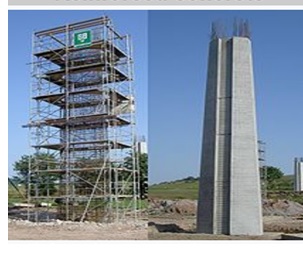Development of Concrete using a Pull Out Test
DOI:
https://doi.org/10.54741/asejar.2.4.4Keywords:
concrete, pull out, frp, testAbstract
In civil engineering, fiber reinforced polymer (FRP) bars are commonly employed. As an alternative to reinforcement steel due to their numerous advantages, including great weight-to-strength ratio, light weight, ease of handling electromagnetic neutrality, and lack of rust. Furthermore, as production machinery develops and more becomes industrialized, FRP has evolved into a cost-effective and competitive structural material. This work examines flexural presentation of fiber-reinforced polymer (FRP) bars and concrete reinforced (RC) after beams conditioning for 6, 9, and 12 months simulated seawater in a wet-dry environment cycling. The purpose of this study is to introduce advancements in the research on FRP-reinforced concrete structures based on recent research. The bond presentation of FRP bars flexural behaviour, concrete, compression behaviour, and concrete of ductility structures reinforced with FRP bars in the last few years around the world are among the topics covered in this study. steel-FRP composite bars (SFCBs) and Basalt FRP (BFRP) are the two types of FRP bars used. For comparison, steel bars are used. During the conditioning, the beams are subjected to a steady load. There are a full of 24 simple-supported rays that being verified.
Downloads
References
Baena, M., Torres, L., Turon, A., & Barris, C. (2018). Experimental study of bond behaviour between concrete and FRP bars using a pull-out test. Composites Part B: Engineering, 40(8), 784-797.
Newman, N., Ayoub, A., & Belarbi, A. (2020). Development length of straight FRP composite bars embedded in concrete. Journal of reinforced Plastics and Composites, 29(4), 571-589.
Galati, N., Nanni, A., Dharani, L.R., Focacci, F., & Aiello, M.A. (2019). Thermal effects on bond between FRP rebar and concrete. Applied Science and Manufacturing, 37(8), 1223-1230.
Veljkovic, A., Carvelli, V., Haffke, M.M., & Pahn, M. (2017). Concrete cover effect on the bond of GFRP bar and concrete under static loading. Composites Part B: Engineering, 124, 40-53.
Golafshani, E.M., Rahai, A., & Sebt, M.H. (2020). Bond behavior of steel and GFRP bars in self-compacting concrete. Construction and Building Materials, 61, 230-240.
Sindhuja, S., Bhuvaneshwari, P. (2021). Push-out test on low-density concrete filled stiffened steel tubular columns. Int. J. Civ. Eng., 19, 1399–1413
Soltani A, Tarighat A, & Varmazyari M. (2018). Calcined marl and condensed silica fume as partial replacement for ordinary portland cement. Int. J. Civ. Eng., 16, 1549–1559.
Medeiros-Junior RA, Gans PS, Pereira E, & Pereira E. (2019). Electrical resistivity of concrete exposed to chlorides and sulfates. ACI Mater J., 116, 119–130.

Downloads
Published
How to Cite
Issue
Section
ARK
License
Copyright (c) 2023 Shridhar Sangave, Vittahal Rao

This work is licensed under a Creative Commons Attribution 4.0 International License.
Research Articles in 'Applied Science and Engineering Journal for Advanced Research' are Open Access articles published under the Creative Commons CC BY License Creative Commons Attribution 4.0 International License http://creativecommons.org/licenses/by/4.0/. This license allows you to share – copy and redistribute the material in any medium or format. Adapt – remix, transform, and build upon the material for any purpose, even commercially.










